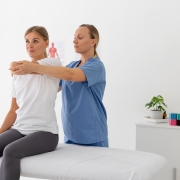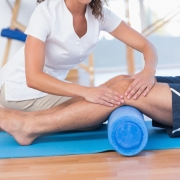4 Actionable Tips for Managing Chronic Pain as an Athlete
You shouldn’t have to deal with chronic pain just because you enjoy being active. Yet, millions of athletes around the world deal with pain on a daily basis so they can continue to do the sports that they love. So, whether you’re a weekend warrior, your neighborhood sports fiend or a professional athlete, here are four actionable tips for managing chronic pain that don’t involve medication.
1. Separate Good Pain From Bad
You wouldn’t have achieved all you have as an athlete if you gave up at the first sign of discomfort. Muscle soreness is an inherent part of increasing strength. But then again, if you keep “pushing through” pain, you run the risk of injury, right? Learn to separate good pain from bad, or more accurate, natural discomfort from actual pain.
2. Have Physical Therapy
Physical therapy in Scottsdale, AZ at Endurance Rehabilitation isn’t just here when you have a sports injury. We can also help with increasing your joint motility, and strength and conditioning training. Give us a call to learn more, because the stronger you are, the less chronic pain you may experience.
3. Have Alternative Therapies
Massage, acupuncture and other physical therapy techniques are also viable ways to manage chronic pain as an athlete, and none of them involves drugs.
4. Enjoy an Anti-inflammatory Diet
As an athlete, you know how integral diet is to your success. Talk to us about planning menus that have anti-inflammatory properties. You won’t need to take cooking classes, we promise!
Living with chronic pain doesn’t mean giving up on your athletic goals. By incorporating practical strategies like the ones mentioned above into your routine, you can reduce discomfort, prevent further injury, and continue pursuing the sports you love. Contact your Scottsdale, AZ physical therapist to learn more.








